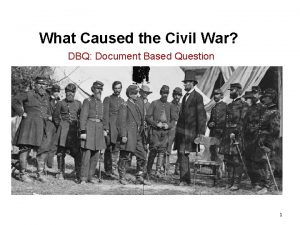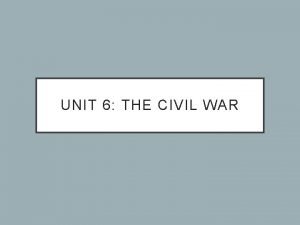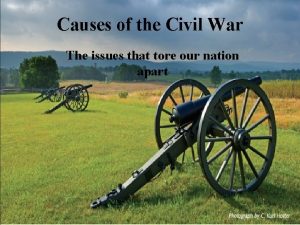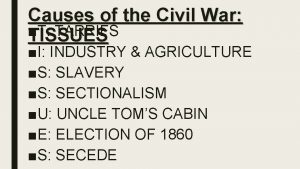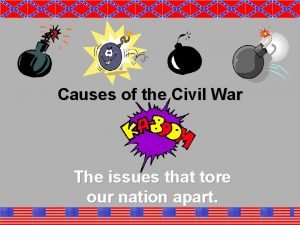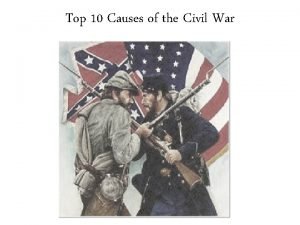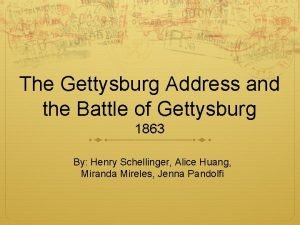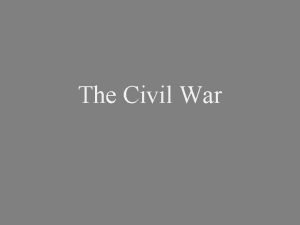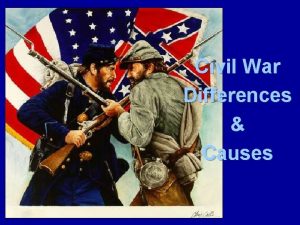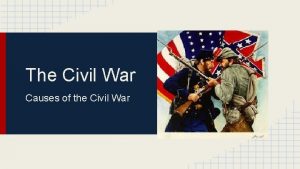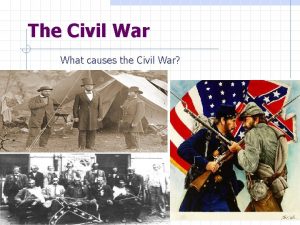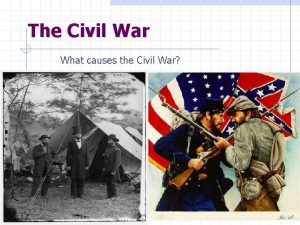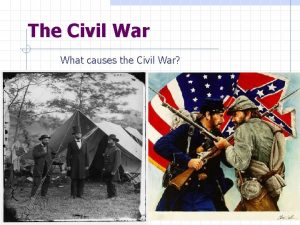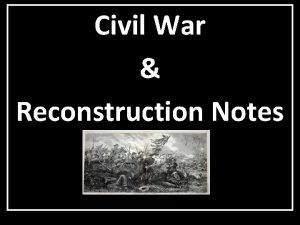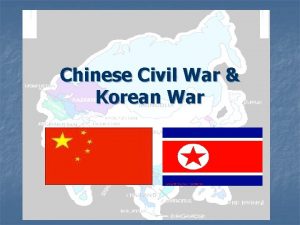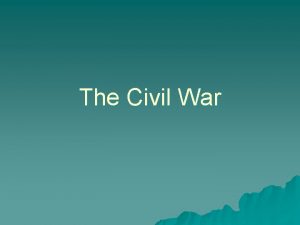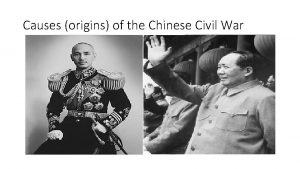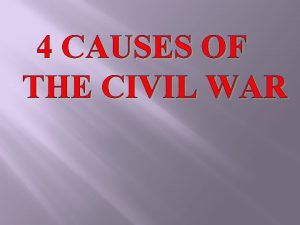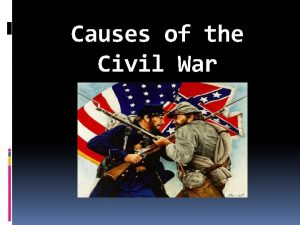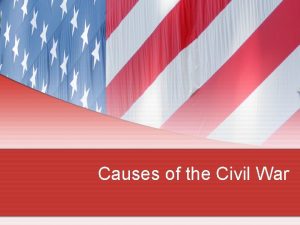Top 10 Causes of the Civil War In



















- Slides: 19

Top 10 Causes of the Civil War

In 1820, Henry Clay negotiated the Missouri Compromise Missouri became a slave state Slavery was outlawed in all western territories above the latitude of 36° 30' Maine broke from Massachusetts and became a free state

In the 1830 s, tariffs divided North and Southerners argued that tariffs benefited only the North and made manufactured goods too expensive John C. Calhoun of SC attempted nullification and threatened secession President Andrew Jackson fought this states’ rights argument

The Nat Turner rebellion increased the barbarity of slavery in the South In 1831, Nat Turner freed slaves on Virginia farms and killed 60 whites Southern whites responded by making slave codes more severe

In 1846, Northern Congressmen tried to pass the Wilmot Proviso This law would have outlawed all slaves from the Mexican Cession Rather than voting along party lines (Democrats and Whigs), Congressmen voting according to their region In 1848, the Free Soil Party was formed to keep slavery from spreading West

The Compromise of 1850 solved the sectional dispute between North and South California entered as a The slave trade ended in free state Washington DC The people of Utah and New Mexico could vote to allow or ban slavery (popular sovereignty)

A stronger Fugitive Slave Law was created that allowed Southerners to recapture slaves in the North

Abolitionists and many Northerners despised the Compromise of 1850 The Fugitive Slave Law allowed runaway slaves (and sometimes free blacks) to be recaptured and enslaved Northerners formed vigilante committees to protect runaways Abolitionism grew in the North

In 1852 Harriet Beecher Stowe published Uncle Tom’s Cabin Depicted slavery as a moral evil and inspired many in the North to join the abolitionist cause Became the bestselling book of the 19 th century

In 1854, Congress passed Stephen Douglas’ Kansas-Nebraska Act The law used popular sovereignty to give the residents of the territories the right to vote to determine slavery

To do this, Congress repealed (ended) the Missouri Compromise line at 36˚ 30’ in the western territories

Northerners were outraged Congress allowed slavery to spread into an by the Kansas-Nebraska Act area where slavery was already outlawed

In 1856, a war began between Kansas and Missouri (known as “Bleeding Kansas")

In 1857, a slave named Dred Scott sued for his freedom after traveling with his master from Missouri to Wisconsin The Dred Scott case presented the Supreme Court with two questions Does Congress have the power to decide on slavery in the territories? Is the Missouri Compromise constitutional?

In Dred Scott v. Sanford (1857), the Supreme Court ruled Dred Scott had no right to sue because blacks are not citizens Congress did not have the power to stop slavery in western territories so the Missouri Compromise was unconstitutional Northern abolitionists were furious

In 1859, abolitionist John Brown led an unsuccessful raid on a federal armory at Harper’s Ferry, VA in an attempt to free slaves in a massive slave uprising

The Election of 1860 was the final straw for the South Republicans nominated Abraham Democrats in the North and South Lincoln who argued for “free soil” were split and a strong national gov’t over the issue of slavery Northern Democrats nominated Southern Democrats nominated John Stephen Douglas who argued for Breckenridge who argued for states rights popular sovereignty and the protection of slavery

Lincoln won the election without a single Southern vote Southerners assumed slavery would soon be abolished and began to discuss the possibility of seceding (breaking away) from the USA

In December 1860, South Carolina became the first state to secede from the Union In 1861, more Southern states seceded and the Civil War between North and South began
 What caused the civil war dbq
What caused the civil war dbq Shermans neckties
Shermans neckties Causes of the civil war jeopardy
Causes of the civil war jeopardy What were the 4 main causes of the civil war
What were the 4 main causes of the civil war Tissues causes of civil war
Tissues causes of civil war What are the 3 main causes of the civil war
What are the 3 main causes of the civil war Causes of the civil war
Causes of the civil war Glorious revolution causes
Glorious revolution causes Civil war first modern war
Civil war first modern war Toward civil war lesson 3 secession and war
Toward civil war lesson 3 secession and war Civil rights webquest
Civil rights webquest Ultimate vs proximate causation
Ultimate vs proximate causation Ultimate vs proximate causation
Ultimate vs proximate causation Civil war map activity
Civil war map activity Gettysburg gtech
Gettysburg gtech English civil war timeline
English civil war timeline What led to civil war
What led to civil war Civil war facts
Civil war facts Civil war staar questions
Civil war staar questions Trifold presentation
Trifold presentation
